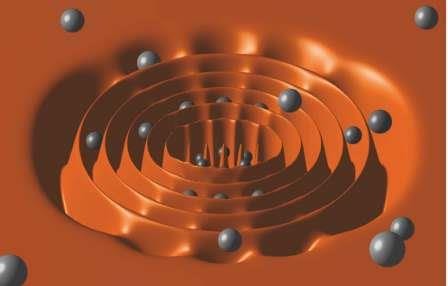Optical tweezers are standard today. Recently, more sophisticated trapping configurations have been realized based on holographic beam shaping techniques. This complex patterning of light fields provides entirely new perspectives in advanced optical micromanipulation.
 Optical tweezers, a simple and robust implementation of optical micromanipulation technologies, have become a standard tool in biological, medical and physics research laboratories. The basic concept of optical tweezers is versatile and flexible. However, with the emergence of more advanced application scenarios came a strong need for more sophisticated optical trapping concepts. Of particular importance and versatility are the various approaches that involve structuring of the light field that is utilized for optical trapping. Enabled by the outstanding flexibility of holographic beam shaping, suitably shaped light fields can be tailored to specific applications, ranging from multiple optical traps over continuous potential landscapes to optical traps that can transfer optical angular momentum. In a review article, Mike Woerdemann, Christina Alpmann, Michael Esseling, and Cornelia Denz from the University of Münster (Germany) give an overview of advanced optical trapping methods by complex beam shaping.
Optical tweezers, a simple and robust implementation of optical micromanipulation technologies, have become a standard tool in biological, medical and physics research laboratories. The basic concept of optical tweezers is versatile and flexible. However, with the emergence of more advanced application scenarios came a strong need for more sophisticated optical trapping concepts. Of particular importance and versatility are the various approaches that involve structuring of the light field that is utilized for optical trapping. Enabled by the outstanding flexibility of holographic beam shaping, suitably shaped light fields can be tailored to specific applications, ranging from multiple optical traps over continuous potential landscapes to optical traps that can transfer optical angular momentum. In a review article, Mike Woerdemann, Christina Alpmann, Michael Esseling, and Cornelia Denz from the University of Münster (Germany) give an overview of advanced optical trapping methods by complex beam shaping.
Holographic beam shaping is not limited to the creation of point-like optical traps used in holographic optical tweezers (HOT). Using specially designed computer-generated holograms, light fields with special properties can be tailored, such as complex three-dimensional intensity distributions which can serve as sophisticated optical potential landscapes. Promising applications arise in optically guided assembly, transfer of orbital angular momentum, or acceleration of particles along defined trajectories.
In addition, the wave front may show features such as optical vortices, and the propagation properties can be tuned from strongly diverging to nondiffracting which enables the optical manipulation in multiple planes or the creation of axially extended particle structures.
Alongside with these concepts which rely on direct interaction of the light field with particles, two promising adjacent approaches tackle fundamental limitations by utilizing non-optical forces which are, however, induced by optical light fields. Optoelectronic tweezers combine the versatility of patterned light fields with the stronger forces achievable with dielectrophoretic trapping and enable the use of much lower light intensities or, alternatively, the manipulation over much larger areas, compared to optical tweezers, and they enable massively parallel trapping. Photophoretic trapping makes use of thermal forces and by this means is perfectly suited for trapping absorbing particles, even in air and over macroscopic distances with microscopic precision.
The possibility to tailor light fields holographically, combined with the complementary dielectrophoretic and photophoretic trapping provides a holistic approach to the majority of optical micromanipulation scenarios. The authors are convinced that many more exciting concepts and applications will arise soon.

















